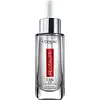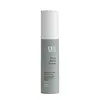What's inside
What's inside
 Key Ingredients
Key Ingredients

 Benefits
Benefits

 Concerns
Concerns

No concerns
 Ingredients Side-by-side
Ingredients Side-by-side

Water
Skin ConditioningGlycerin
HumectantHydroxyethylpiperazine Ethane Sulfonic Acid
BufferingSodium Hyaluronate 1.5%
HumectantPEG-60 Hydrogenated Castor Oil
EmulsifyingWater, Glycerin, Hydroxyethylpiperazine Ethane Sulfonic Acid, Sodium Hyaluronate 1.5%, PEG-60 Hydrogenated Castor Oil, Secale Cereale Seed Extract, Calcium Pantothenate, Dipeptide Diaminobutyroyl Benzylamide Diacetate, Ascorbyl Glucoside, Disodium EDTA, Pentylene Glycol, Phenoxyethanol, Chlorphenesin
Water
Skin ConditioningButylene Glycol
HumectantPropanediol
SolventGlycerin
Humectant1,2-Hexanediol
Skin ConditioningBetaine
HumectantTrehalose
HumectantPolyglyceryl-10 Oleate
Skin ConditioningPanthenol
Skin ConditioningArginine
MaskingPolyglyceryl-10 Laurate
Skin ConditioningCarbomer
Emulsion StabilisingCaprylyl Glycol
EmollientAllantoin
Skin ConditioningEthylhexylglycerin
Skin ConditioningSodium Hyaluronate
HumectantXanthan Gum
EmulsifyingLavandula Angustifolia Oil
MaskingDisodium EDTA
Lactobacillus Ferment
Skin ConditioningDiethoxyethyl Succinate
SolventBeta-Glucan
Skin ConditioningCentella Asiatica Extract
CleansingScutellaria Baicalensis Root Extract
AstringentHydroxypropyltrimonium Hyaluronate
Hydrolyzed Hyaluronic Acid
HumectantSodium Acetylated Hyaluronate
HumectantTocopherol
AntioxidantHyaluronic Acid
HumectantHydrolyzed Sodium Hyaluronate
Skin ConditioningSodium Hyaluronate Crosspolymer
HumectantPotassium Hyaluronate
Skin ConditioningLinalool
PerfumingWater, Butylene Glycol, Propanediol, Glycerin, 1,2-Hexanediol, Betaine, Trehalose, Polyglyceryl-10 Oleate, Panthenol, Arginine, Polyglyceryl-10 Laurate, Carbomer, Caprylyl Glycol, Allantoin, Ethylhexylglycerin, Sodium Hyaluronate, Xanthan Gum, Lavandula Angustifolia Oil, Disodium EDTA, Lactobacillus Ferment, Diethoxyethyl Succinate, Beta-Glucan, Centella Asiatica Extract, Scutellaria Baicalensis Root Extract, Hydroxypropyltrimonium Hyaluronate, Hydrolyzed Hyaluronic Acid, Sodium Acetylated Hyaluronate, Tocopherol, Hyaluronic Acid, Hydrolyzed Sodium Hyaluronate, Sodium Hyaluronate Crosspolymer, Potassium Hyaluronate, Linalool
 Reviews
Reviews

Ingredients Explained
These ingredients are found in both products.
Ingredients higher up in an ingredient list are typically present in a larger amount.
Disodium EDTA plays a role in making products more stable by aiding other preservatives.
It is a chelating agent, meaning it neutralizes metal ions that may be found in a product.
Disodium EDTA is a salt of edetic acid and is found to be safe in cosmetic ingredients.
Learn more about Disodium EDTAGlycerin is already naturally found in your skin. It helps moisturize and protect your skin.
A study from 2016 found glycerin to be more effective as a humectant than AHAs and hyaluronic acid.
As a humectant, it helps the skin stay hydrated by pulling moisture to your skin. The low molecular weight of glycerin allows it to pull moisture into the deeper layers of your skin.
Hydrated skin improves your skin barrier; Your skin barrier helps protect against irritants and bacteria.
Glycerin has also been found to have antimicrobial and antiviral properties. Due to these properties, glycerin is often used in wound and burn treatments.
In cosmetics, glycerin is usually derived from plants such as soybean or palm. However, it can also be sourced from animals, such as tallow or animal fat.
This ingredient is organic, colorless, odorless, and non-toxic.
Glycerin is the name for this ingredient in American English. British English uses Glycerol/Glycerine.
Learn more about GlycerinSodium Hyaluronate is hyaluronic acid's salt form. It is commonly derived from the sodium salt of hyaluronic acid.
Like hyaluronic acid, it is great at holding water and acts as a humectant. This makes it a great skin hydrating ingredient.
Sodium Hyaluronate is naturally occurring in our bodies and is mostly found in eye fluid and joints.
These are some other common types of Hyaluronic Acid:
Learn more about Sodium HyaluronateWater. It's the most common cosmetic ingredient of all. You'll usually see it at the top of ingredient lists, meaning that it makes up the largest part of the product.
So why is it so popular? Water most often acts as a solvent - this means that it helps dissolve other ingredients into the formulation.
You'll also recognize water as that liquid we all need to stay alive. If you see this, drink a glass of water. Stay hydrated!
Learn more about Water